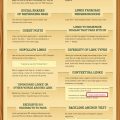SEO Basics: How to Optimize Your Website for Better Search Rankings
SEO Basics: How to Optimize Your Website for Better Search Rankings
Are you tired of throwing money at online advertising, only to watch your ad spend go up in smoke without getting any real returns? Do you want to boost your website’s visibility and reach a wider audience without breaking the bank? Well, you’re in luck because search engine optimization (SEO) is here to save the day!
In this article, we’ll dive into the basics of SEO and provide you with a step-by-step guide on how to optimize your website for better search rankings. So, grab a cup of coffee, sit back, and get ready to learn the ins and outs of SEO.
What is Search Engine Optimization (SEO)?
Before we begin, let’s define what SEO is all about. Simply put, SEO is the process of improving your website’s visibility and ranking on search engines like Google, Bing, or Yahoo. The goal is to increase the quality and quantity of website traffic by making your site more relevant, useful, and user-friendly.
Why is SEO Important?
So, why should you care about SEO? Here are just a few reasons:
- Increased visibility: By optimizing your website for search engines, you can reach a wider audience and get your message out to people who are actively searching for it.
- More traffic: When your site shows up in the top results of a search engine, you’re more likely to attract visitors who are looking for what you offer.
- Cost-effective: Unlike paid advertising, SEO is a cost-effective way to drive traffic and generate leads.
- Improved credibility: By optimizing your website for search engines, you can establish yourself as an authority in your industry and build trust with potential customers.
Basic SEO Principles
Now that we’ve covered why SEO matters, let’s talk about the basic principles of SEO. Here are some key takeaways:
- Keyword research: Identify the words and phrases your target audience uses to search for your content.
- Content quality: Create high-quality, engaging, and informative content that addresses the needs and concerns of your target audience.
- Page speed: Ensure that your website loads quickly and efficiently, as slow sites can negatively impact user experience and rankings.
- Mobile-friendliness: Make sure your site is mobile-friendly, as this is now a key ranking factor for search engines.
On-Page Optimization
Now that we’ve covered the basics, let’s dive into on-page optimization techniques:
- Title tags: Write unique and descriptive title tags that accurately summarize your content.
- Meta descriptions: Craft compelling meta descriptions that entice users to click through from search engine results pages (SERPs).
- Header tags: Organize your content using header tags (H1, H2, H3, etc.) to create a clear hierarchy of information.
- Content optimization: Use relevant keywords in your content, but avoid over-optimization, as this can lead to penalties from search engines.
Off-Page Optimization
On-page optimization is just half the battle – off-page optimization is equally important:
- Link building: Get high-quality backlinks from other reputable websites to increase your authority and ranking.
- Social media presence: Establish a strong social media presence by creating content, engaging with your audience, and sharing your content on multiple platforms.
- Reviews and ratings: Encourage customers to leave reviews and ratings on your website or social media profiles.
- Guest blogging: Write guest posts for other reputable websites to build relationships and increase your authority.
Technical SEO
Now that we’ve covered the basics of on-page and off-page optimization, let’s talk about technical SEO:
- Website architecture: Organize your site using a clear and logical hierarchy of pages and categories.
- Mobile-friendliness: Ensure that your site is mobile-friendly by testing it on multiple devices and ensuring that all content loads properly.
- Page speed: Optimize your page speed by compressing images, minifying CSS and JavaScript files, and using caching techniques.
- SSL encryption: Install SSL encryption to secure your website and protect user data.
SEO Tools and Resources
To help you on your SEO journey, here are some essential tools and resources:
- Google Search Console: Monitor your website’s search engine rankings, traffic, and technical issues with Google Search Console.
- SEMrush: Use SEMrush to analyze your competitor’s backlinks, keyword rankings, and technical SEO issues.
- Ahrefs: Explore Ahrefs to analyze your content, backlinks, and keyword rankings.
- Moz: Get started with Moz to learn about SEO best practices, link building, and content optimization.
Conclusion
Optimizing your website for search engines is a long-term strategy that requires patience, persistence, and continuous effort. By following these basic principles of SEO, you can improve your website’s visibility, drive more traffic, and generate leads.
Remember, SEO is not a one-time fix – it’s an ongoing process that requires regular monitoring and adjustments to stay ahead of the game. With this article as a starting point, you’ll be well on your way to optimizing your website for better search rankings.




